SEO Guides, Tips & More!
Learn from Our Experience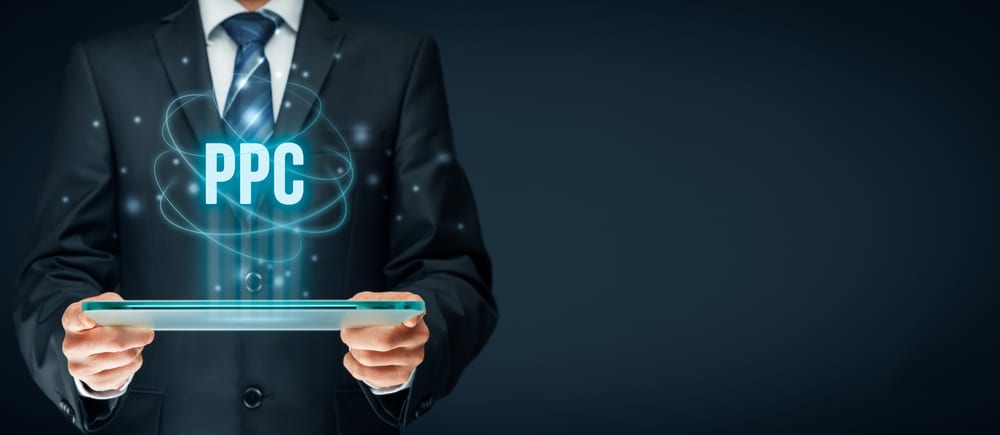
2019 PPC Essentials
In the world of digital marketing, there are few concepts more common and discussed than PPC advertising. PPC, or pay-per-click, experienced its rise alongside the rise of Google, who pioneered the concept and turned it into one of the most lucrative businesses of all time. Advertising now accounts for over 97% of Google’s total revenue, almost all of it through its Ads program.
But PPC isn’t just a tool for making Google richer—it’s also a powerful way to bring in new audiences, leads, and customers to your business through the power of Google search results.
Why PPC?
While much of the content on our blog focuses on traditional or organic SEO, that doesn’t mean that PPC doesn’t have its place on the digital marketing landscape. In fact, there are many reasons that PPC is important including it’s easier to track return on investment, it’s quite easy to target the specific audience you want (for example, LinkedIn allows for targeting by title, company or even groups or associations individuals are connected with or belong to), and there is the control aspect. Businesses can spend as much or as little as they want to reach their campaign goals. Finally, PPC allows a company to have an immediate presence for certain keyword term searches, which may take time to accomplish using organic SEO.
There are many reasons why PPC is important, and if you want to explore the why a little more deeply, check out Search Engine Journal, and BayShore Marketing Group for a deeper dive on the topic.
What is PPC?
In simple terms, PPC works about how you might expect, based on its name. You pay Google (or other search engines) for every time someone clicks on an ad you’ve created through their platform. You create an ad for your business, set some parameters, and then Google uses its algorithms to determine the highest-value audience for your ad—the ones that are most likely to click on it.
Below is an example of what ads look like on the Google search engine results page (SERP). Notice the word ad directly next to the URL. Organic or natural search results don’t have this designation.
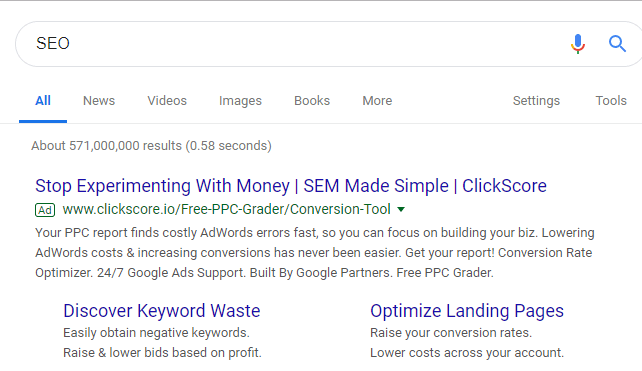
But how do successful PPC campaigns work? And how does Google determine when to show your ad as opposed to the thousands of other ads jostling for space in Google search results?
In this in-depth guide, find out the basics of how PPC advertising works, how to develop, target, track, and optimize your campaign, and how to make all of those clicks you’re paying for actually mean something for your bottom line.
The Basics of PPC
PPC advertising is run largely through Google’s AdWords platform, though other search engines like Bing use similar approaches. To understand how Google determines when to show your ad in search results, it helps to think of the process as an auction.
When you go to set up a new PPC ad campaign, you’ll be given the option to identify keywords that you think are most relevant to your ad. When Google users enter these same keywords into their search bars, they will be shown your ad.
But that’s not the end of the process—aside from the keywords you identify as relevant to your ad, there are two other factors that go into whether your ad will appear—your maximum bid and something called your “Quality Score.”
Your maximum bid is determined by you. It’s the absolute most you’re willing to pay for your ad to show up when a keyword is entered.
The other factor, the Quality Score, is determined by Google. This metric is designed to protect Google users and Google itself. They want to ensure that users are only receiving ads that are actually relevant and helpful to them, which will encourage them to keep using Google in the future.
What goes into Quality Score?
Google has never been one to share all of their secrets, but they do provide some interesting insights on this topic. They have identified bid, quality of landing pages, ad rank thresholds, content of the search and finally, expected impact of ad formats and sitelink extensions. Below is a partial excerpt from the Google Ads help center on the topic.
“At a high level, think of Ad Rank as having several factors:
 Your bid – When you set your bid, you’re telling Google Ads the maximum amount you’re willing to pay for a click on your ad. How much you actually end up paying is often less, and you can change your bid at any time.
Your bid – When you set your bid, you’re telling Google Ads the maximum amount you’re willing to pay for a click on your ad. How much you actually end up paying is often less, and you can change your bid at any time.- The quality of your ads and landing page – Google Ads also looks at how relevant and useful your ad and the website it links to are to the person who’ll see it. Our assessment of the quality of your ad is summarized in your Quality Score, which you can monitor—and work to improve—in your Google Ads account.
- The Ad Rank thresholds – To help ensure high quality ads, we set minimum thresholds that an ad must achieve to show in a particular ad position.
- The context of the person’s search – With the ad auction, context matters. When calculating Ad Rank, we look at the search terms the person has entered, the person’s location at the time of the search, the type of device they’re using (e.g., mobile or desktop), the time of the search, the nature of the search terms, other ads and search results that show on the page, and other user signals and attributes.”
There is a lot of great information in the Google Help Center, and if you are interested in becoming more educated on the details, then dig it.
Since I rarely write about anything other than Google, I also want to provide information from Microsoft Advertising (better known as Bing).
So what’s different?
Conceptually what makes a good ad for each of the search engines is the same. However, Bing has three prime criteria that it uses to assess quality including expected click through rate, ad relevance and then landing page experience.
(Notice that landing page has appeared in both matrices for quality score. This is an important point, and why I am drawing attention to it. BE SURE that your campaign uses a quality landing page, or you will struggle to rank well even with high click bids).
There is some very helpful information on Bing to guide efforts. Below is an excerpt from their site which provides insight into how Microsoft evaluates ad quality.
“Expected click-through rate score
The expected click-through rate score reflects how likely your ads will be clicked and how well your keyword competes against other keywords targeting the same traffic. This score predicts whether your keyword is likely to lead to a click on your ads, considering how well your keyword has performed in the past relative to your ad’s position. A score of 3 is Above Average; a score of 2 is Average, and a score of 1 is considered Below Average.”
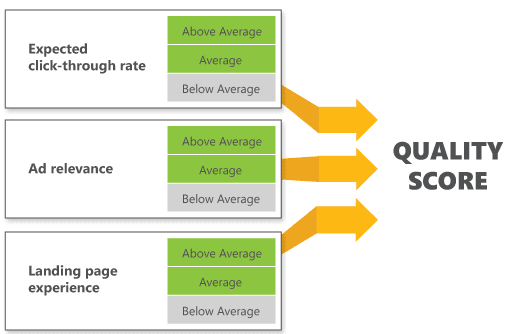
There really is a lot of information and very detailed explanations about the variables that determine the quality score. If you want to take a deep dive, then I suggest giving Microsoft Advertising Help Guide a spin.
How Maximum Bid and Quality Score Interact
Now let’s look at the auction process in straightforward terms. This process happens instantaneously when a user enters keywords into their Google search bar.
Let’s say your ad is in competition with four other ads for the keyword “plumbing contractors.” Google looks at your max bid and quality score, then multiplies them to determine your overall ad rank score. If your max bid is $3 and your quality score is 8, that leads to a total score of 24. Google compares that to the other ads bidding for the same keyword, and the order of scores determines the order your ads will appear. If you have the second highest score, your ad will appear second in the list of ads that appear in the user’s Google search results.
Determining Your CPC (Cost Per Click)
Now that the placements have been determined, Google determines the price each advertiser will pay for a click on their ad. This is determined by dividing the total score of the next advertiser below you by your quality score, then adding $0.01.
If the advertiser in the slot below you had an overall score of 16, and your quality score was 8, you would pay $2.00 for the ad plus $0.01 for a total of $2.01 per click.
This system ensures that users receive ads that are relevant to them and advertisers connect with the most high-value potential customers at the lowest rates. Not to mention, this system also brings in billions for Google.
Ads That Appear on Webpages
Google search results aren’t the only place where your ad might appear—it can also show up on webpages that have signed up for Google’s AdSense program. The bidding process is similar, but bids are set at the ad group level rather than the keyword level. They also differ in the sense that the relevance of an ad is determined by its placement on a webpage, rather than a search query.
Below is an example of an ad in this format.
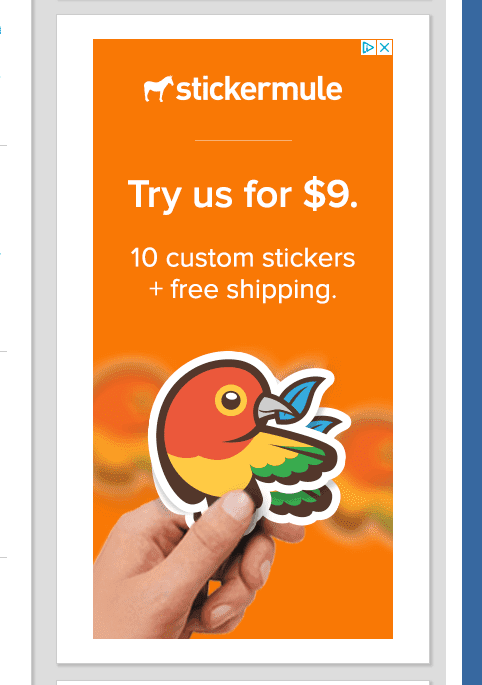
Developing Your Ad
Once you’ve determined that you have a specific page you want to send customers through PPC advertising, it’s time to develop your ad.
Writing your ad copy isn’t an exact science, but there are a few best practices to ensure the best possible results.
First and foremost, you want to ensure that your ad text is engaging. Identify the most appealing elements of your product or service for the audience you’re targeting and present them in your ad in a concise and impactful way. Remember, your goal here isn’t to explain the entirety of your product—it’s to drive traffic to your website so that they can learn more or make a purchase there. Think of your ad copy as a sales pitch. As Google states it, be sure to write ad copy that is genuine and compelling.

That said, it’s important to remember that writing text that inspires action isn’t your only goal—you also need to be thinking about the quality score of your ad. Google rewards ads that are not only engaging, but well-written and, above all, relevant. You might think that making a bombastic promise in your ad is a great way to drive traffic, but if Google doesn’t think you’re delivering on that promise when users arrive at your site, they’ll lower your quality score.
That’s why it’s so important to write your ads for accuracy, not just appeal. Ensure that users know what they’re getting when they click on your site. Sending them somewhere other than where they expect to go is a huge no-no that Google will catch, and punish you for with a lower quality score, requiring you to make higher bids in order to rank in their searches.
Now that you’ve written the copy for your campaign, it’s time to target that campaign to the best possible audience.
Targeting Your Campaign
When it comes to targeting your ad, keywords are your primary focus—but not your only one. You can also determine locations where you want your ad to appear (if your business is locally based), the timing of your ad, and of course your overall budget.
But first, the all-important keywords.
Choosing Keywords & Negative Keywords
Choosing the right keywords for your campaign is the single most essential task you’ll complete when designing your ad. One of the biggest mistakes that advertisers make is that they throw a few relevant keywords and then move on. But the more keywords you can add to your list, the better.
This doesn’t just include the highest-value keywords, but also what is known as ‘long-tail’ keywords. These are keywords that are relevant to your ad but are less commonly used in searches. For example, if a popular keyword in your area is “plumbing contractor,” a long tail keyword in your space might be “fixing basement plumbing leaks from the sprinkler system.” This is less likely to be searched than more common searches, but that also means it’s less expensive to bid on for placement with your ad.
By adding many of these long tails to your keyword list, on top of the most common searches, you’ll be able to cast a wider net and manage your budget while still getting impressive clicks on your campaign. Remember—long-tail keywords overall make up for the biggest portion of the search pie.
If you are using the Google platform, they make it easy to identify keyword options through the Google Keyword Planning Tool. It’s quite useful for keyword research (hint: you can use it for organic SEO also) because it’s based on data directly from Google! It not only gives ideas about what keyword to target but also provides search volume information.
Check out the high amount of information available. It’s very useful that Google shares the cost to be at the top of the page – lets you know what you are getting into!
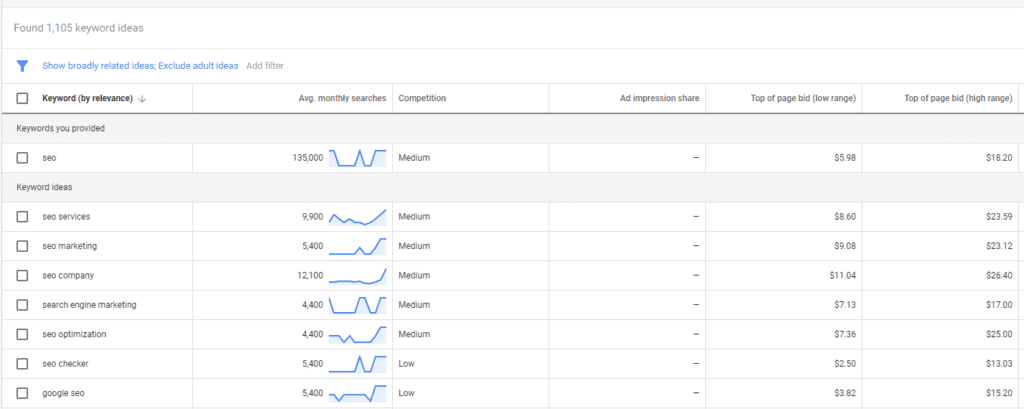
Setting Negative Keywords
Now that you’ve set relevant keywords, what about defining irrelevant ones? This process is almost as important, as it will weed out searches that would bring low-value viewers to your site. Keywords added to this list will exclude your ad from appearing, bidding, and receiving clicks in searches where the keywords appear.
Much of this process will happen as you optimize your campaign, after receiving some data and feedback once your ad has been running for some time, though you can often get started at the beginning. This list of negative keywords is designed to keep non-converting keywords from costing you clicks and money.
Setting Locations
Google allows you to set specific search origination areas to ensure that you access users in your local area or areas where you’re specifically targeting. For example, if you’re advertising an entertainment venue in downtown Pittsburgh, it wouldn’t make much sense to spend any of your budget advertising to people who live in the Salt Lake City, UT area.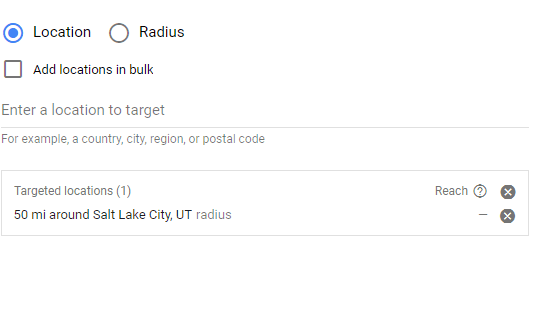 Identifying the locations for your ad is an important way to make your ad more efficient, effective, and high converting.
Identifying the locations for your ad is an important way to make your ad more efficient, effective, and high converting.
Deciding on Timing
Don’t forget to set the timing of your ad—if it’s connected to a specific event, discount, or promotion your business is running, you can set the ad to run continuously for the duration of the promotion.
Setting Your Budget
Of course, you’ll want to determine the total amount of your budget you’re willing to spend on the campaign. This is separate from your maximum bid and will determine the spending point at which Google will stop running your ad and charging you for clicks. The great thing about PPC is that you can set the amount and not worry about it, or based on performance, make incremental changes. (Makes it easy to manage your budget).
Tracking and Optimizing Your Campaign
Believe it or not, the most important part of making your campaign successful comes after it’s launched. It is absolutely vital to track and monitor your PPC campaign on an almost daily basis as it runs. Google, as well as your site’s built-in monitoring metrics, will help you see exactly which keywords are leading to clicks and, in turn, which clicks are leading to leads and sales.
When working with clients, we not only check in on the ad metrics but also observe what happened after they visited the website. Did they convert or bounce? How long were they on the site? Looking beyond the numbers will help to gain a better understanding of the buyer journey and experience. This will create the opportunity to make the needed changes to optimize the campaign.
Optimization is our favorite word and we are about to cover it in detail!
Optimizing Your Campaign
Now that you have some data from your campaign, you’ll be able to optimize it effectively. This involves adding keywords to your list, defining negative keywords that are failing to convert, and even refining your bids to either spend more for better placements or spend less and accept lower placements.
If you’ve found that your ad copy itself isn’t converting effectively, or is leading to a poor quality score from Google, it may be time to refine the text of your ad. However, we recommend creating an entirely new ad for this rather than editing the current one. That way you’ll be able to effectively measure the metrics of the two ads and compare them against each other.
Making Clicks Mean Something
Finally, there is an important element of PPC advertising that’s completely separate from the ad itself. When you’ve poured all of this effort, time, and money into your ad, it’s important that it is put in the best position to lead to the results you want.
That means that your ad should send users somewhere that will lead to sales or leads, depending on your goals. Before you ever create your ad, you should have created a powerful landing page designed to funnel leads from the ad to their desired destination or action.
Not only is this just good marketing sense, but it will also increase the quality score of your ad on Google. The more impactful your landing page, the more relevant Google will judge it to be, which will cost you less in ad spending while boosting your rankings higher compared to other ads.
That’s it!
What did we miss? Let us know in the comment section below if there is anything you would add based on your experience.
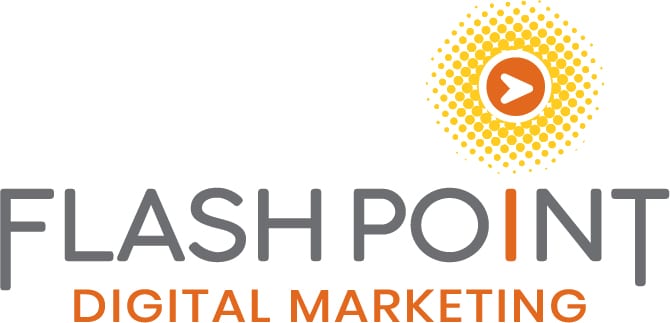
 Your bid – When you set your bid, you’re telling Google Ads the maximum amount you’re willing to pay for a click on your ad. How much you actually end up paying is often less, and you can change your bid at any time.
Your bid – When you set your bid, you’re telling Google Ads the maximum amount you’re willing to pay for a click on your ad. How much you actually end up paying is often less, and you can change your bid at any time.